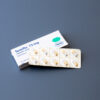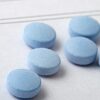Finding the right type and dose of ADHD meds for each child is trial and error. Luckily, some techniques can help lessen the side effects.
While there is a relatively scant amount of research examining the benefits or the risks of stimulant medication -– the most common type of drug used to treat ADHD –- over the long term, many parents and doctors may decide that a stimulant (along with continuing cognitive therapy) might be the most effective way to treat your child.
But addressing ADHD first through non-medical means is best practices and in many cases makes using drugs unnecessary. Here is an article on how children can be treated for ADHD through non-pharmaceutical interventions. However, there are times when medication is part of an appropriate treatment plan.
Although stimulants have benefits, they also have a wide array of side effects. However, these side effects can potentially be minimized with a few pieces of helpful information.
1. Find the Right Medication
There are 2 basic lines of stimulant medication: those derived from methylphenidate (e.g, Ritalin) and those derived from dextroamphetamine (e.g., Adderall). Although they are very similar medications, they are not the same, and any given child may do much better on one than the other. There is no reliable way to predict whether your child would do better on one than the other. There is new genetic testing that may help predict your child’s reaction to stimulants, but so far it cannot distinguish between the 2 lines.
The absolute key to successful treatment with minimal side effects is communication, communication, communication!
Even within a given line, there can be significant differences between how your child reacts to one or another. As an example, Focalin (dexmethylphenidate) can be effective when there are unacceptable reactions to Concerta (methylphenidate), or vice versa, despite the fact that both are derived from methylphenidate.
2. Find the Right Dosage
Like most psychotropic medication, there is no single dose that will be effective for each patient. The expected dose is generally based on a child’s size, but there are dramatic differences in how children metabolize these medications. There are college students in my practice doing very well on the minimal possible dose of Concerta, for example, while there are 10-year-olds who need twice that much.
The correct dose is the smallest dose that produces the desired effect without causing unacceptable side effects. In some cases, no such dose exists. In other words, even the smallest dose that is effective causes side effects that cannot be tolerated. Then another medication must be tried. Most clinicians would suggest that an acceptable side effect is appetite loss at lunchtime only. An unacceptable one is depression or irritability. However, it is the patient and patient’s parents who are the final determiners of what is an acceptable side effect and what side effects make the drug benefits not worth it.
3. Nutrition and Lifestyle
If you are not taking care of all the nutritional and lifestyle factors that can influence ADHD, then I recommend doing so before trying drugs. These include proper nutrition, adequate sleep and adequate exercise. Continue to make sure school accommodations (as outlined in a 504 plan in any public school) are up to date and being carried out. If you feel that you might need help in parenting your child effectively, seek the proper guidance.
4. Non-pharmaceutical Interventions
There are some other non-pharmaceutical interventions that should be continued even while taking medication. Some of these would include taking fish oil, zinc and iron when indicated, as I discussed in a prior article for MedShadow. Continuing these interventions can reduce the amount of medication necessary to be effective and thus make the difference between successful and unsuccessful treatment.
5. Communication
Over and above these factors, the absolute key to successful treatment with minimal side effects is communication, communication, communication! As parents you are the hub of a network that is crucial to your child’s success.
You and your child must talk to each other to be as clear as possible about positive and negative effects. This communication will be as much by observation of behavior as by what your child is actually telling you.
You and his or her teachers must be in constant touch to be as clear as possible about the effects of the treatment while the child is at school. For the majority of parents, this is the major time that the medication is active, so this is crucial.
You must give your medical provider as much feedback as possible to help determining changes in dosage or medications. Beware the health care provider who gives you a prescription and tells you to come back in 4 to 6 months without any interim contact. This is unlikely to lead to a positive result.
Although I believe many children with ADHD can do well without stimulant or other medication, there are some children for whom it is truly necessary. Following the above guidelines will help increase the chances of successful treatment.






